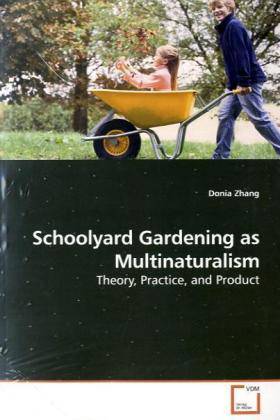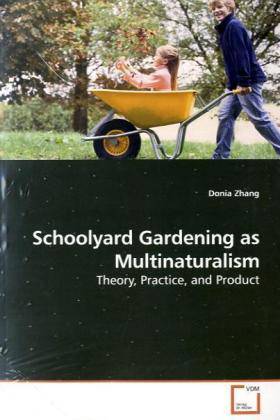
- Afhalen na 1 uur in een winkel met voorraad
- Gratis thuislevering in België vanaf € 30
- Ruim aanbod met 7 miljoen producten
- Afhalen na 1 uur in een winkel met voorraad
- Gratis thuislevering in België vanaf € 30
- Ruim aanbod met 7 miljoen producten
Zoeken
Schoolyard Gardening as Multinaturalism
Theory, Practice, and Product
Donia Zhang
Paperback | Engels
€ 77,95
+ 155 punten
Omschrijving
Environmental education and ecological literacy is
evolving into a pedagogical field, with more and more
schools today taking actions to create landscaped
settings for natural learning than ever before. With
these developments comes a need for an integrated
book that provides both core philosophies as well as
method. This comprehensive volume Schoolyard
Gardening as Multinaturalism presents the first guide
to ways of involving students in schoolyard gardening
and designing sustainable schoolyard gardens.
Influenced by Chinese Daoism, American Naturalism,
Canadian Multiculturalism, and the architectural
discipline, a new term Multinaturalism is suggested
in response to Turner s (1995) call for a better name
of Post-Postmodernism. A conceptual model of Pillars of Student Involvement, as well as a design
template for schoolyard gardens that is applicable in
the northern hemisphere, are proposed. Schoolyard
Gardening as Multinaturalism should help shed some
light on this exciting learning environment, and is
highly recommended for educators, philosophers,
designers, parents, or anyone who is planning to use
gardens for teaching and learning.
evolving into a pedagogical field, with more and more
schools today taking actions to create landscaped
settings for natural learning than ever before. With
these developments comes a need for an integrated
book that provides both core philosophies as well as
method. This comprehensive volume Schoolyard
Gardening as Multinaturalism presents the first guide
to ways of involving students in schoolyard gardening
and designing sustainable schoolyard gardens.
Influenced by Chinese Daoism, American Naturalism,
Canadian Multiculturalism, and the architectural
discipline, a new term Multinaturalism is suggested
in response to Turner s (1995) call for a better name
of Post-Postmodernism. A conceptual model of Pillars of Student Involvement, as well as a design
template for schoolyard gardens that is applicable in
the northern hemisphere, are proposed. Schoolyard
Gardening as Multinaturalism should help shed some
light on this exciting learning environment, and is
highly recommended for educators, philosophers,
designers, parents, or anyone who is planning to use
gardens for teaching and learning.
Specificaties
Betrokkenen
- Auteur(s):
- Uitgeverij:
Inhoud
- Aantal bladzijden:
- 216
- Taal:
- Engels
Eigenschappen
- Productcode (EAN):
- 9783639042023
- Uitvoering:
- Paperback
- Afmetingen:
- 150 mm x 220 mm
- Gewicht:
- 398 g

Alleen bij Standaard Boekhandel
+ 155 punten op je klantenkaart van Standaard Boekhandel
Beoordelingen
We publiceren alleen reviews die voldoen aan de voorwaarden voor reviews. Bekijk onze voorwaarden voor reviews.








